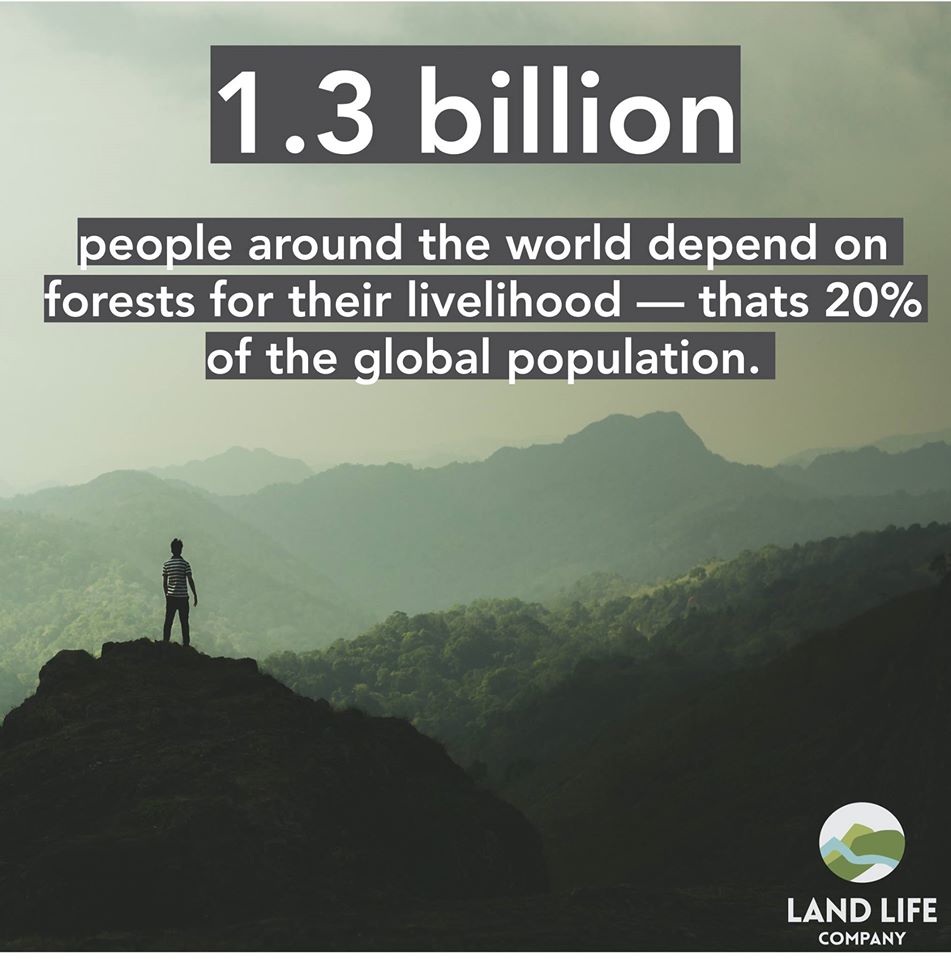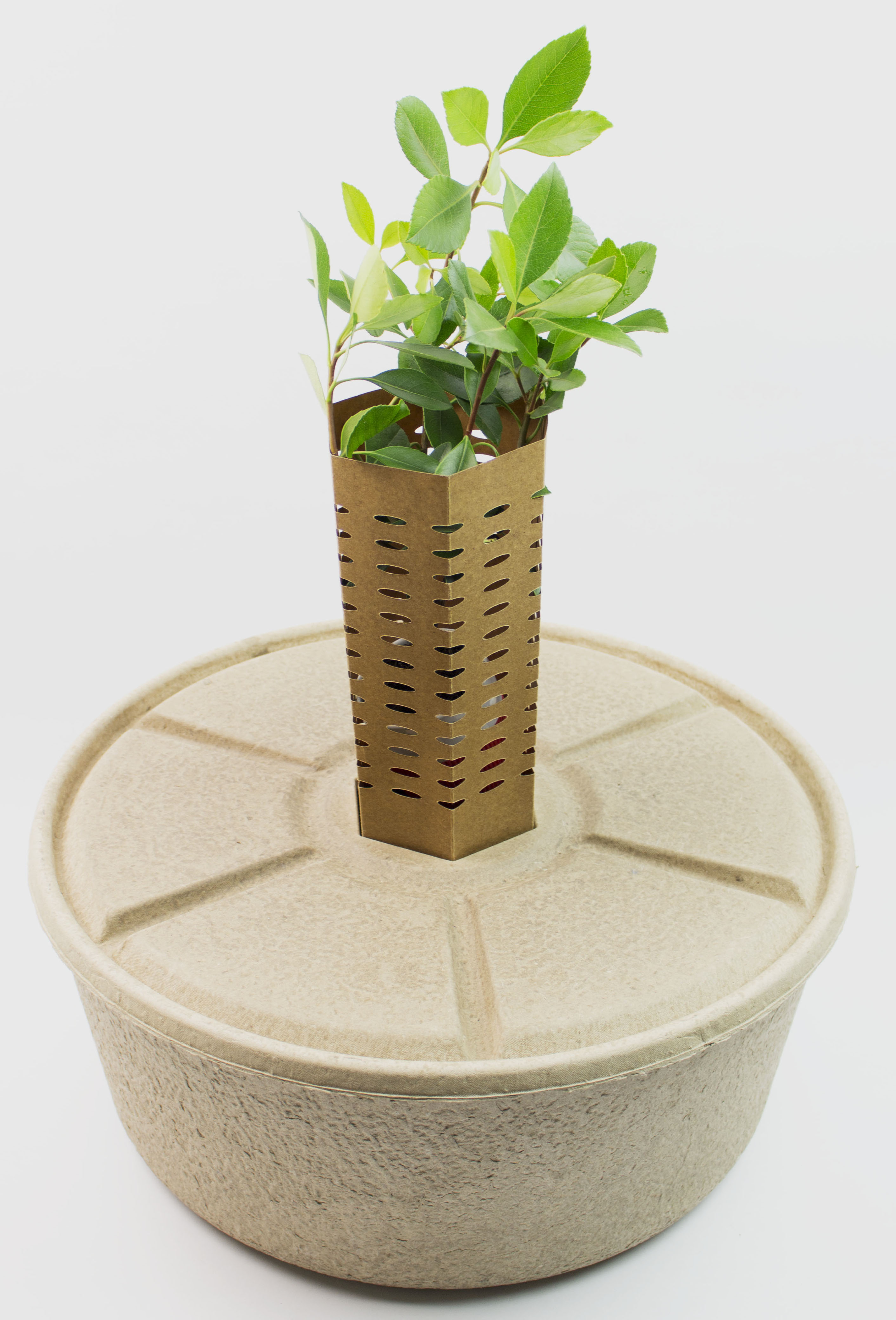
In partnership with Green Challenge
- Sustainable Planet -
- 4mins -
- 1,386 views
Turning degraded land into forests sounds impossible, right?
Not so! Thanks to this 100% biodegradable “tree incubator” the driest areas on earth are turned into forests.
Land Life Company – a former Green Challenge Winner
In 2015, Land Life Company’s groundbreaking initiative to revive degraded land into vibrant forests was rightfully recognized with the prestigious Green Challenge award by the Dutch National Postcode Lottery. This accolade underscores their exceptional commitment to combining sustainability, entrepreneurship, and creativity to tackle one of the most pressing environmental issues of our time. By winning the Green Challenge, Land Life Company not only received significant financial backing of €500,000 but also gained a global platform to highlight the potential of reforestation as a viable solution to climate change.
We must and can restore our planet within our lifetime
With the COCOON planting technology, makers of Land Life Company say they have a low-cost, sustainable, and scalable solution to plant trees in arid soils. Together, they say, we can revitalise ecosystems and communities for this generation and the next.
The Cocoon
The innovative planting technology enables trees and plants to grow in arid conditions, revitalising ecosystems and communities.
Low-cost – 10 x cheaper than traditional tree planting
- 100% biodegradable – COCOON dissolves into the organic substrate for the plant
- Low maintenance – after planting, NO follow-up irrigation or maintenance
- The COCOON is designed to support a seedling through its critical first year.
By providing water and shelter while stimulating the seedling to produce a healthy and deep root structure, tapping into the sub-surface water supply within its first year. This way, the COCOON produces independent, strong trees that are not reliant on external irrigation and can survive harsh conditions.
Trees have been planted with the COCOON in more than 20 countries with survival rates of 80-95%.
Source: LandLife Company

Together, we can reverse the disastrous effects of land degradation within our lifetime The “Cocoon” planting technology can be used for nature restoration and agroforestry in arid soils. Cocoon trees have a high survival rate, the technology is low-cost, biodegradable, and water-efficient. Source: Facebook/LandLifeCompany
How the Cocoon works
The Water Reservoir:
The water reservoir is made of paper pulp, crop residuals or grasses, and other FDA-improved organic compounds to ensure water tightness during the first year. It is only filled once during planting. Water is sparsely transported to the tree using wicks. As the reservoir degrades and empties over time, the remaining shallow pits will serve as a micro-catchment to collect surface runoff during rain events. Additionally, the degraded reservoir becomes an organic substrate ameliorating the soil.
Mycorrhizal fungi:
Mycorrhizal fungi are added to the soil surrounding the roots of the plant. They increase the surface absorbing area of roots 100 to 1,000 times. This improves access to soil moisture as well as the soil’s nutrients. Mycorrhizal fungi also release enzymes into the soil that dissolve hard-to-capture nutrients, such as organic nitrogen, phosphorus and, iron commonly fixed onto the soil complex. These fungi are present in 90% of natural forests and woodlands and form a critical, symbiotic relationship with the roots.
Tree Shelter:
A cylindrical shelter is placed around the tree to protect the plant against the sun, desiccating winds, and smaller animals feeding on the young plant.
Source: landlifecompany.com

High survival rates for young trees planted using this system Trees have been planted with the COCOON in more than 20 countries with survival rates of 80-95%. Source: LandLife Company
Benefits of the Cocoon
The COCOON saves water, is low-cost and biodegradable. It can be used at scale to ameliorate degraded land and it offers a “no hassle” solution, inherent to its design.
Water Efficiency:
The COCOON requires 1-10% of the water used by traditional tree irrigation systems. This approach results in a more responsible, sustainable use of water. The approach also reduces the exposure to increasing water prices, water use legislation or water disputes. Restoring top soil with the COCOON improves rainwater infiltration, allowing the tree to make better use of rainfall.
Low Cost:
The COCOON costs 3 to 10 times less than alternatives such as drip irrigation (e.g. the initial investment and running costs). It is also cheaper than planting without a support tool and coming back with a watering truck 3-5 times in the first summer to manually water all plants (a method often applied). The low cost base makes planting feasible where existing irrigation techniques had previously made planting cost prohibitive.
Biodegradable:
The COCOON biodegrades after half a year and becomes substrate to the soil, making it both an eco-friendly solution and a no-hassle solution. There are no maintenance or removal costs associated with the COCOON.
Scalability:
The COCOON is a scalable approach in space and time. Since no local water or electricity connection is required, it can be used to plant large number of trees in flat zones and on slopes. It can be used to plant in each season, including the hot and dry summer period, which is of great (cost) value to any restoration project.
Survival and Resilience:
Experiments have shown that native trees planted with the COCOON can reach survival rates of 80 up to 95% in areas where trees planted without support show survival rates of 0 to 40%. Through the years, trees planted with the COCOON and mycorrhizae show higher growth rates and increased resilience against drought. These results do depend on species, climatic, and soil conditions.
Source: LandLife Company
Highway landscaping in the UAE: the COCOON can be applied to projects of all sizes and can be used for different tree types and soil conditions. The various applications of the COCOON include nature restoration, landscaping, highway planting, and productive trees. Source: LandLifeCompany.com
Impact of nature restoration and landscaping:
Inspiration and pride for the local and international community
Bringing back nature is an inspiration to local communities and visitors. People take pride in restoring their land and building their national heritage. Especially in hot and dry climates, people value the presence of trees and nature in general.
Land value
Re-greening the land and adding trees will increase the value of the land over time. Degraded land can typically be acquired at a low cost, while the value of surrounding fertile, vegetated lands is 5-10 times higher. Using the COCOON, degraded land can be turned into valuable land with more potential.
Reducing stress on resources
Increasingly we are becoming aware of the challenges to sustain and improve the quality of our lives in a world of increasing demand and depleting resources. As the production and usage of resources are interlinked (food, water, energy, soils, CO2), integrated solutions must be developed and deployed. Restoring nature by planting trees on degraded land is the most water-efficient way of addressing this challenge and has a positive impact on the long-term availability of resources. Trees are the earth’s natural way to capture CO2. A full-grown forest may absorb between 1 and 10 t/ha of CO2. A healthy mycorrhizae system may increase the CO2 uptake by a factor of 2 to 3. If the full cost for re-greening is to be carried by CO2 credits, a price of 5-10 euros per ton would suffice to break even.
Quality of the ecosystem
Planting native trees is a starter for ecosystem revitalisation. As trees grow, they have multiple positive effects on the ecosystem:
- The trees’ roots improve the water catchment in the soil and decrease water losses due to erosion;
- Soil erosion is reduced, as the tree canopy acts as a buffer for intense rainfall;
- Newly grown trees create shade and humus for shrubs and other vegetation to grow in the tree surroundings;
- Soil quality and soil life will increase. Over time the soil around the tree will turn darker and more humid
Benefits to health and society
In addition, there is extensive research outlining the positive effects of nature on communities and individuals, from health effects to a reduction in crime levels.
How Your Innovation Could Win the Green Challenge
Join the ranks of environmental innovators like the Land Life Company by applying to the Green Challenge today. With €500,000 up for grabs, this is your chance to scale your sustainable project and make a lasting impact. Don’t wait—visit their website now to submit your idea for a greener future. Your innovation could be the next to transform our world.

